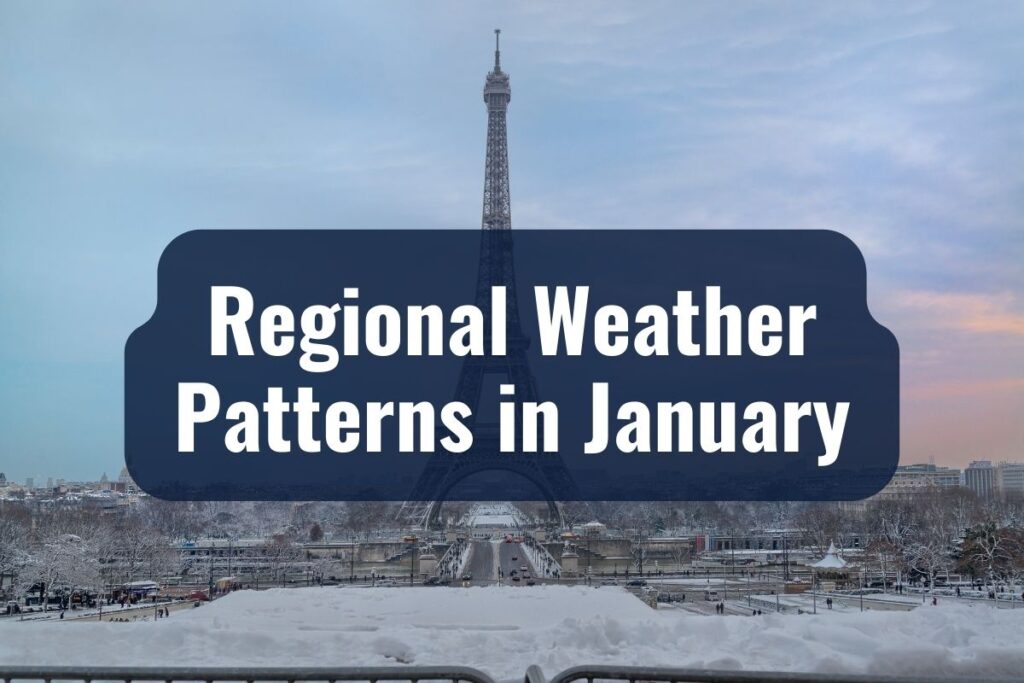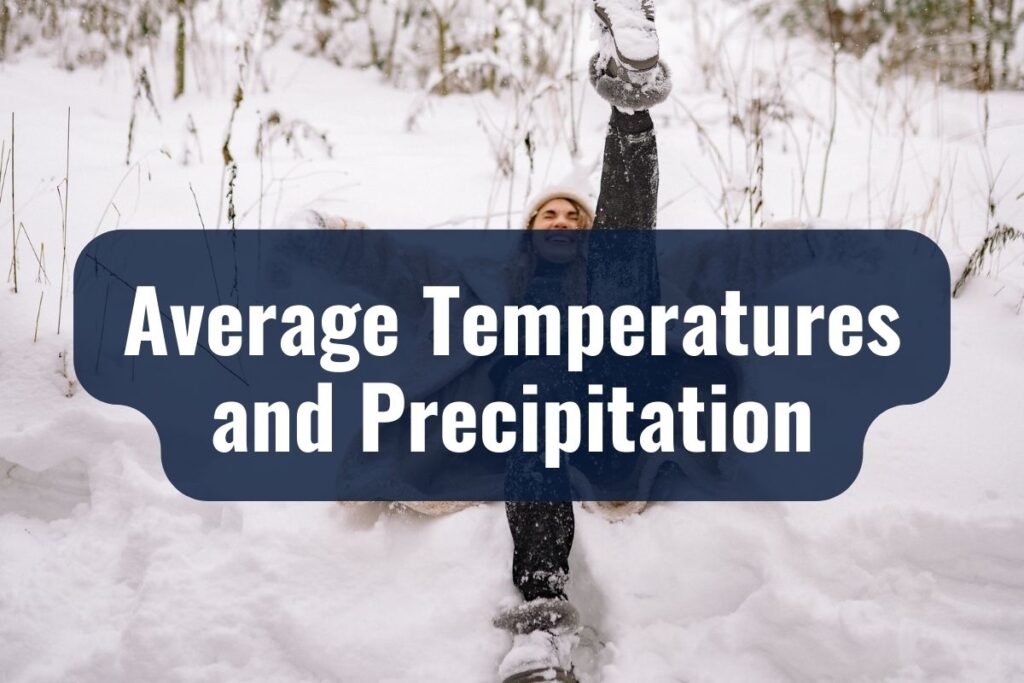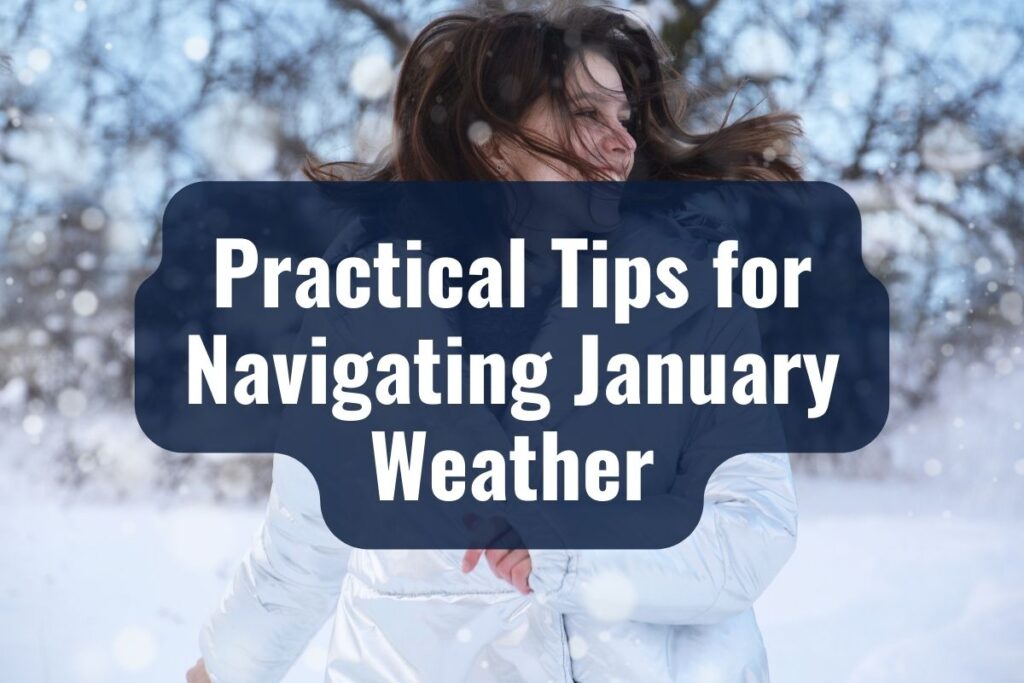France has a unique blend of climate zones, ranging from oceanic influences in the north and west to Mediterranean warmth in the south and continental shifts in the east. This diversity means that the weather can significantly vary depending on where you are in the country.
January, being in the heart of winter, typically presents the season’s chill with its characteristics and variations across these regions. Understanding these differences is crucial for planning, whether setting up a residence, traveling, or simply going about your daily activities in France.
KEY TAKEAWAYS
- France’s diverse climate zones lead to varying January weather conditions across regions.
- Proper clothing and preparation are essential for comfort and safety in January’s cold.
- Despite the cold, January offers vibrant cultural events and seasonal activities.
- Adverse weather can affect travel; staying informed and planning ahead is crucial.
- Indoor heating and energy efficiency are important considerations in colder months.
- Being prepared and understanding local customs can enhance the winter experience.
The Importance of January Weather for Foreigners in France
For foreigners residing in or visiting France, grasping the nuances of January weather is more than just a comfort—it’s a necessity. It affects everything, from what you wear to how you travel and even your health and daily activities. Knowing what to expect from the weather can significantly enhance your experience and ease the adaptation process to your new surroundings.
Regional Weather Patterns in January

Northern France: Chilly and Overcast
Northern France experiences some of the coldest temperatures during January, with averages dipping close to 0°C (32°F). Cities like Lille and Rouen often encounter frosty mornings, occasional snow, and frequent overcast skies.
Despite the chill, life continues with a slower, more deliberate pace. If you’re in this region, expect shorter days and prepare for the possibility of snow disrupting travel and daily routines.
Western France: Mild but Moist
The western part of France, including cities like Nantes and Bordeaux, is influenced by the Atlantic Ocean, leading to milder temperatures compared to the north but with higher humidity and precipitation levels. Temperatures typically range from 2°C to 9°C (35°F to 48°F).
Rain is quite common, and the weather can change rapidly. It’s essential for residents and visitors alike to be prepared for wet conditions and to enjoy the occasional sunny spells that make outdoor activities delightful.
Southern France: Relatively Warm and Bright
The Mediterranean climate of Southern France offers a reprieve from the harsher winter conditions found in other regions. Cities like Nice and Marseille enjoy milder temperatures, often ranging from 6°C to 13°C (43°F to 55°F).
While it’s generally warmer and sunnier, occasional cold snaps and rain can occur, especially in the inland areas. January is an excellent time to explore the coastal areas with fewer tourists and a more relaxed atmosphere.
Eastern France: Crisp and Snowy
Eastern France, including areas like Alsace and the French Alps, is characterized by a continental climate, resulting in colder temperatures and higher chances of snow, especially at higher altitudes. This region is a winter wonderland in January, attracting snow sports enthusiasts and those who enjoy the scenic, snow-covered landscapes.
Cities like Strasbourg can have temperatures ranging from -2°C to 4°C (28°F to 39°F). If you’re visiting or living in this region, prepare for cold temperatures and enjoy the winter activities that come with the season.
Average Temperatures and Precipitation

| Region | Average Temperature (°C) | Precipitation (mm) |
| Northern France | 0 to 6 | Moderate to High |
| Western France | 2 to 9 | High |
| Southern France | 6 to 13 | Moderate |
| Eastern France | -2 to 4 | Moderate to High |
Understanding January’s Climate Data
In January, France’s varied geography translates into a wide range of temperatures and precipitation levels. By examining the average temperatures and rainfall, you can get a clearer picture of what typical January weather might look like in different parts of the country. This information is essential for planning outdoor activities, choosing the right clothing, and understanding potential weather-related challenges.
Temperature Averages Across Regions
Northern France: Average low temperatures hover around 0°C (32°F), while average highs tend not to exceed 6°C (43°F). Days are usually cold, with frosty mornings common.
Western France: Temperatures are milder due to the Atlantic influence, with averages ranging from 2°C (35°F) to 9°C (48°F). The ocean moderates the temperatures, preventing extreme cold but also bringing more moisture.
Southern France: Enjoying the warmest January weather, average temperatures range from 6°C (43°F) to 13°C (55°F), with coastal areas particularly mild and pleasant.
Eastern France: This region experiences some of the coldest January weather, especially in the mountains. Average lows can dip to -2°C (28°F), with highs around 4°C (39°F) in lower areas.
Precipitation Patterns
Northern France: Expect moderate rainfall with occasional snow, especially inland. The weather can be quite gray and overcast.
Western France: This region sees more rainfall due to its oceanic climate, with frequent wet days but also mild temperatures.
Southern France: Rainfall is less frequent compared to the north and west, but when it does rain, it can be heavy, especially along the Mediterranean coast.
Eastern France: Snow is more common, particularly in the mountainous areas, providing perfect conditions for winter sports.
Charting the Data
A chart or table summarizing these temperature and precipitation averages can be incredibly helpful for visual learners and those looking to compare different regions at a glance. Such a resource would include the average high and low temperatures along with typical rainfall or snowfall amounts for major cities or areas within each region.
Weather-Related Challenges and Considerations
Clothing and Gear Recommendations
In January, the right clothing and gear are essential for comfort and safety across France’s varied climates. In the north and east, warm layers, insulated jackets, gloves, and hats are crucial to protect against the cold and wind.
Waterproof boots with good traction are recommended due to the possibility of snow and ice. In the western and southern regions, while milder, waterproof clothing and sturdy umbrellas are advisable due to the rain. Layering remains key, as temperatures can fluctuate throughout the day.
Typical Weather Disruptions in Travel and Daily Life
January weather can lead to disruptions in travel and daily routines. Snow and ice can affect transportation, especially in the northern and eastern regions, leading to delays or cancellations of trains and flights. Fog and rain can impair driving visibility.
It’s important to plan extra travel time and stay informed about weather updates. Additionally, shorter daylight hours can impact outdoor activities, so it’s wise to plan accordingly and prioritize safety.
Health Considerations During Colder Months
The colder, sometimes damp weather of January can pose health challenges, particularly for those not used to the climate. It’s important to maintain a warm and dry living environment, be mindful of heating safety, and dress appropriately to avoid cold-related illnesses.
Staying active and ensuring adequate vitamin D intake are also vital during these shorter daylight months. If you have specific health concerns, consulting with a healthcare professional and understanding local healthcare resources is advisable.
Preparing Your Home for the Weather
For those staying longer in France, preparing your home to handle the colder weather is essential. This includes ensuring adequate insulation, understanding how to efficiently use heating systems, and managing energy costs.
Checking for drafts, using weather stripping, and understanding local resources for weatherproofing can also make a significant difference in comfort and heating efficiency.
Cultural and Seasonal Activities

Popular January Events and Festivals
Despite the chill, January is a vibrant month for cultural activities and festivals in France. The country’s rich heritage ensures there are plenty of events to enjoy:
La Fête des Rois (Feast of the Kings)
Celebrated in early January, this festival involves the sharing of ‘galette des rois,’ a special cake. It’s a time for communal gathering and celebration.
Soldes d’hiver (Winter Sales)
For those who love shopping, January marks the beginning of the official winter sales period in France, a great time to find deals on everything from fashion to electronics.
Festival of Lights in Lyon
Although mainly a December event, some activities spill into early January, illuminating Lyon with spectacular light displays and installations.
Outdoor Activities Suitable for January’s Weather
While the colder weather might seem limiting, there are numerous outdoor activities to embrace in January:
Skiing and Snowboarding
The French Alps and Pyrenees are prime destinations for winter sports enthusiasts, offering some of the best slopes in Europe.
Winter Walks
Cities and countryside alike present a different kind of beauty in January. Places like the vineyards of Bordeaux or the historic streets of Paris are quieter and offer a unique experience in the winter light.
Visiting Castles and Monuments
Many of France’s historic sites remain open in January and are less crowded, offering a more personal experience.
Indoor Activities to Enjoy the Warmth
To escape the cold, France offers many indoor activities:
Museums and Galleries: Take advantage of the smaller crowds to visit famous spots like the Louvre or Musée d’Orsay, or discover some of the lesser-known but equally fascinating museums throughout the country.
Theater and Music: Check out the local cultural agenda for concerts, operas, and plays. January is a good time to enjoy France’s indoor cultural scene.
Cooking Classes: Participate in a cooking class to learn how to make traditional French winter dishes. It’s a delightful way to spend a chilly day and great for meeting people.
Seasonal Delicacies
January is also an excellent time to enjoy seasonal French cuisine. Look out for:
Truffles and Foie Gras: These delicacies are in season and often featured in restaurant menus.
Regional Specialties: Each region has its winter dishes, like Tartiflette in the Alps or Cassoulet in the southwest, perfect for warming up after a day outside.

Transportation Tips During Adverse Weather Conditions
Stay Updated: Before any travel, check the latest weather forecasts and transportation updates. Websites and apps for local transit and national railways are invaluable for real-time information.
Plan Ahead: Allow extra time for travel, especially if conditions are icy or snowy. If driving, ensure your vehicle is winter-ready with appropriate tires and an emergency kit.
Use Public Transportation: In urban areas, public transportation can be more reliable during harsh weather conditions. Understand the schedules and any changes due to the weather.
Staying Informed About the Weather
Weather Apps and Websites: Utilize reliable weather forecasting apps and websites for daily updates. Look for those offering regional specifics for the most accurate information.
Local News: Tune into local news channels or radio stations, especially for alerts about severe weather or disruptions.
Community Advice: Engage with local communities or neighbors who can offer advice and updates based on experience and local knowledge.
Advice on Heating and Energy Efficiency
Efficient Heating: Understand how to use your heating system efficiently to maintain a comfortable indoor temperature without excessive energy costs.
Insulation Checks: Ensure your residence is well insulated to prevent heat loss. Even simple measures like draft excluders can make a significant difference.
Energy Saving: Be mindful of energy consumption, especially during peak hours. Using timers for heating can help manage costs and efficiency.
Preparing for Daily Life
Appropriate Clothing: Dress in layers to adapt to changing conditions throughout the day. Waterproof and windproof outer layers are essential.
Home Supplies: Keep a stock of essential items in case of severe weather, including food, water, medications, and flashlights.
Health Care: Know the location and contact information of nearby healthcare facilities. Keep a basic first-aid kit at home.
Engaging with Local Customs and Solutions
Local Practices: Observe and learn from how locals deal with the weather, from clothing choices to daily routines.
Community Support: In many places, community support networks can help, especially in severe conditions. Find out about local services and how to access them.
By following these practical tips, foreigners in France can navigate January’s weather more comfortably and safely. Being prepared, staying informed, and adopting a flexible approach to daily activities will help ensure a pleasant and untroubled start to the year. Whether it’s a snowy day in the Alps or a rainy afternoon in Paris, with the right preparation, every day can be enjoyed to its fullest.
Frequently Asked Questions
Is it always cold in France in January?
While January is generally cold, especially in the northern and eastern regions, temperatures and weather conditions vary across the country. Southern France can be milder, particularly along the Mediterranean coast.
What should I wear in January in France?
Layering is key. Wear thermal underlayers, sweaters, and insulated jackets. Don’t forget a waterproof layer for rain or snow, and include gloves, hats, and scarves for colder regions.
How does snow affect transportation in France?
Snow can lead to delays and cancellations, particularly in regions unaccustomed to heavy snowfall. Always check the latest travel updates before heading out, and consider alternative travel plans.
Are tourist attractions open in January?
Many tourist attractions remain open but may have reduced hours. It’s always best to check the official websites or contact them directly for the most accurate information.
Can I go skiing in France in January?
Yes, January is one of the prime months for skiing in France, especially in the Alps and Pyrenees. Resorts are fully operational, offering a range of winter sports and activities.
What are the best indoor activities in January?
Visiting museums, galleries, theaters, and restaurants are excellent indoor activities. Many towns also have indoor markets, spas, and leisure centers.
How do I stay healthy during the cold months?
Stay active, dress warmly, and eat nutritious foods. Ensure your living space is well-heated and ventilated. If you’re feeling unwell, seek advice from a pharmacy or doctor.
What if I’m not used to driving in snow?
If you’re inexperienced with snow driving, it’s often safer to use public transportation. If you must drive, ensure your car is winter-ready and consider snow-driving lessons or tips from locals.


